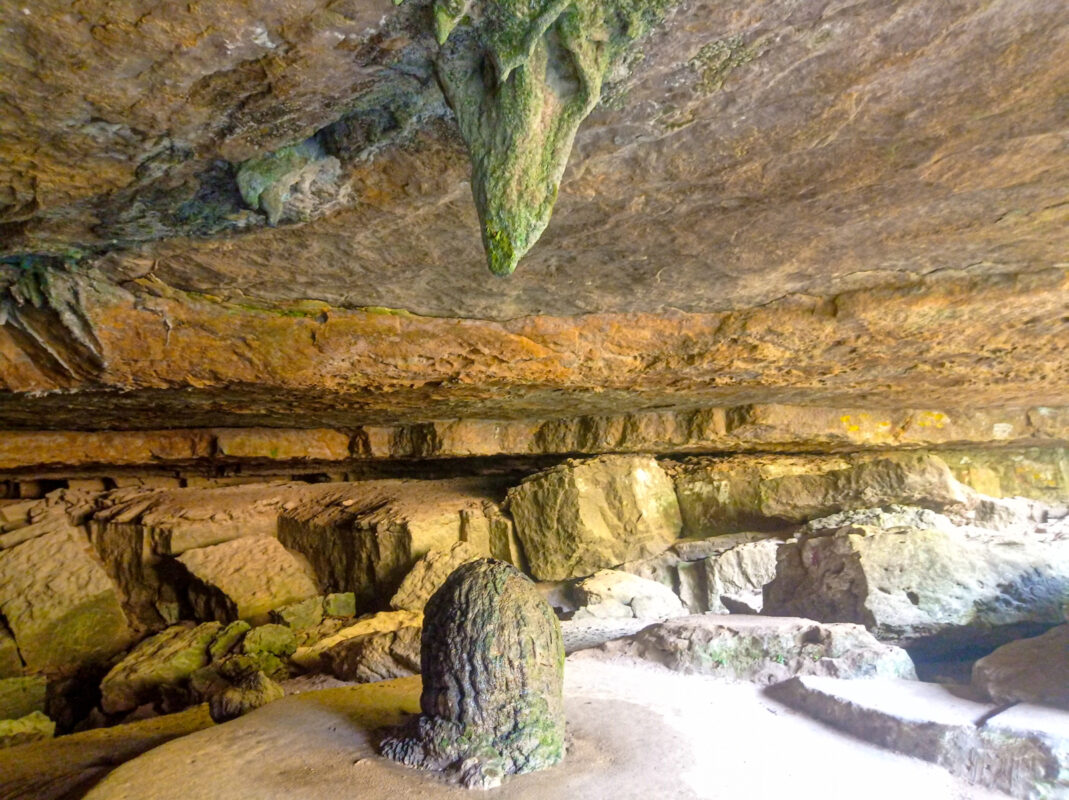Shillong, Meghalaya – The picturesque Mawjymbuin Cave in Mawsynram, Meghalaya, is at the center of a growing regional conflict that has brought to light the delicate balance between tourism and religious sentiment in northeastern India. This dispute has not only affected local communities but also threatens to disrupt tourism and travel between Assam and Meghalaya.
The Cave and Its Significance
Mawjymbuin Cave, located about 60 kilometers from Shillong, is a limestone cave and renowned for its stunning geological formations, particularly a stalagmite that resembles a Shivalinga.
The cave’s structure, carved out of calcareous sandstone, and the surrounding lush green environment make it a popular destination for nature lovers and tourists interested in geology and spirituality. The cave is also notable for its constant dripping water, which adds to the serene and mystical atmosphere of the place.
For many Hindus, the Shivalinga-like formation
holds significant religious value, making it a popular pilgrimage site during the sacred month of Shravan.
The Ban and Its Rationale
The local village council of Mawsynram (dorbar shnong) recently imposed a ban on worship and rituals within the cave. This decision followed an announcement by the Kutumba Surakshya Parishad, an Assam-based Hindu group, which planned a pilgrimage to the cave akin to the Kanwar Yatra. The village council’s ban aims to prevent the cave from being used predominantly as a religious site, arguing that such a transformation could undermine its appeal as a geological attraction and impact local tourism.
Meghalaya’s Tourism Minister, Paul Lyngdoh, supported the ban, stressing the need to preserve the cave’s primary function as a tourist destination. “Allowing worship could diminish the cave’s global appeal and harm tourism, which is a crucial part of our local economy,” he said. Despite this, the decision has sparked controversy and opposition.
Assam’s Reaction: Threats and Blockades
The ban has incited a strong backlash from the Kutumba Surakshya Parishad. The group has accused the Meghalaya government and Christian organizations of interfering with Hindu religious practices and has threatened to block major roads leading to Meghalaya if the ban is not lifted. The group’s president, Satya Ranjan Borah, has warned that such restrictions could lead to repercussions for people of Meghalaya traveling through Assam.
In response to the escalating situation, the Assam-based group has demanded that the Meghalaya government facilitate Hindu worship at the cave and reverse the ban imposed by the local village council. The dispute highlights broader regional tensions and the complexities of managing cultural and religious sensitivities.
Impact on Tourism and Regional Relations
This controversy is not only a clash of religious and cultural values but also a significant issue for tourism. Mawjymbuin Cave, along with other attractions in Meghalaya like Sohra (Cherrapunjee), Mawlynnong, and Dawki, draws numerous visitors from across India and abroad. The conflict has already led to road blockades and disruptions in travel between Assam and Meghalaya, affecting the smooth flow of tourism.
Moreover, recent scuffles involving student unions in Meghalaya, which have tried to prevent Assam-based tourist vehicles from entering key tourist spots, have further exacerbated the situation. These incidents reflect a growing sentiment in Meghalaya to control and protect local resources and tourist sites from external influences.
Looking Ahead
The Mawjymbuin Cave dispute underscores the need for careful negotiation and communication between Assam and Meghalaya. As both states navigate these turbulent waters, the resolution of this conflict will likely set a precedent for managing similar issues in the future. Stakeholders from both sides, including local authorities and tourism officials, will need to work together to address the concerns of all parties involved while ensuring that regional tourism can thrive without further disruptions.
As the situation unfolds, travelers and locals alike will be watching closely to see how this delicate issue is resolved and how it might impact the vibrant tourism landscape of northeastern India.


Thanks for sharing this update. The Mawjymbuin Cave controversy highlights the intricate balance between preserving natural attractions and respecting religious sentiments. It’s crucial that both Assam and Meghalaya work together to find a resolution that supports tourism while honoring local and religious values. The outcome of this situation will certainly influence regional tourism and relations.
Thank you for the insightful post on the Mawjymbuin Cave conflict in Meghalaya. You captured the delicate balance between tourism and religious practices well. It’s intriguing to see how regional tensions impact both local communities and travel. I appreciated the balanced view on Assam-Meghalaya relations and tourism’s role. Looking forward to updates as this evolves!